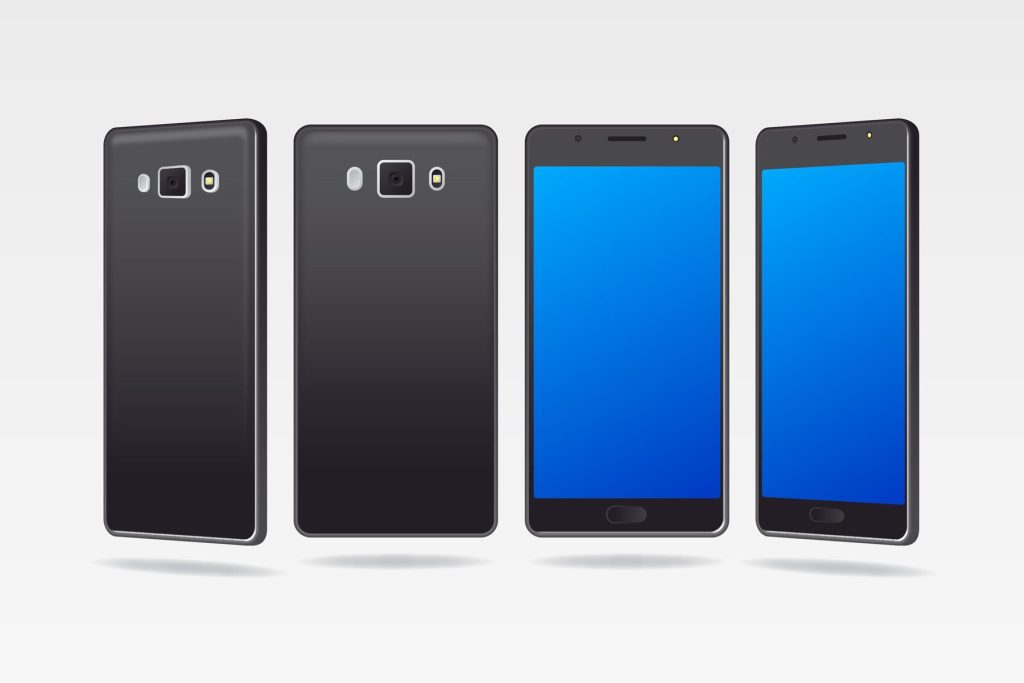The early years of mobile communications. From bricks to cots
At the end of the 20th century, mobile communications took its first steps, moving from bulky “bricks” to more compact and stylish clamshells. This was a period of rapid development of technology, the search for optimal form factors and the conquest of the market by the first mobile giants.
The year 1983 was marked by the appearance of the Motorola DynaTAC 8000X, the first commercially available mobile phone. Despite its impressive size and weight, it became a symbol of a new era, opening up communication opportunities outside the walls of the home or office.
First call: Motorola DynaTAC 8000X
On April 3, 1973, the world heard the first call made on a mobile phone. It was the Motorola DynaTAC 8000X, developed by Martin Cooper, an engineer at Motorola. This device, reminiscent of a brick in its size and weight, was a real breakthrough in the field of communications.
DynaTAC 8000X was the result of ten years of research and development, costing the company approximately $100 million. It had a talk time of up to 30 minutes and required about 10 hours to fully charge the battery. Despite its high price and limited functionality, the DynaTAC 8000X became a symbol of status and technological progress, paving the way for future generations of mobile devices.
Following Motorola, Nokia and Ericsson entered the arena with their own variants of mobile devices. Competition stimulated development, leading to smaller phones and the emergence of new functions. Flip phones and sliders became popular experiments with form factor, combining compactness with increased keyboard area and screen.
Nokia and Ericsson
Following Motorola, two European giants, Nokia and Ericsson, entered the mobile technology market. The Finnish company Nokia, which initially specialized in the production of paper and rubber, saw the potential in the new industry and began developing its own mobile phones. Ericsson, a Swedish company with extensive experience in telecommunications industry has also joined the race for leadership in the mobile communications market.
Both companies made significant contributions to the development of mobile technology, introducing a number of innovative phone models to the world. Competition between Nokia and Ericsson contributed to lower prices for devices and increased functionality, making mobile communications accessible to a wider audience.
Clamshells and sliders: The era of experimentation with form factor
As technology developed, mobile phone manufacturers began to experiment with the design and form factor of devices. The era of “bricks” was becoming a thing of the past, giving way to more compact and ergonomic models.
Flip phones such as the legendary Motorola RAZR became a symbol of style and functionality. They offered a comfortable keyboard and a large screen hidden in a compact design. Slide-out keyboards also gained popularity, offering a balance between compactness and ease of typing. This The period was a time of searching for the ideal form for a mobile phone, meeting the requirements of both functionality and aesthetics.
From PDAs to touch screens
The late 90s and early 2000s marked a turning point in the evolution of mobile phones. Conventional dialers have been replaced by devices with advanced functionality - smartphones.
IBM Simon Personal Communicator: The first step to a smartphone
In 1994, IBM introduced the Simon Personal Communicator to the world, a device considered one of the first smartphones. Simon combined the functions of a mobile phone, pager, fax, PDA and email. It had a monochrome touch screen, a stylus for data entry and a set of pre-installed applications such as a calendar, address book and calculator.
Despite its innovation, the Simon Personal Communicator was not widely used due to its high price and limited functionality. However, it was an important step towards the creation of modern smartphones, demonstrating the potential of combining communication and computing capabilities in one device.
BlackBerry: King of Enterprise Communications
In the early 2000s, the Canadian company BlackBerry introduced the world to its smartphones, which quickly gained popularity among business users. A key feature of BlackBerry was a convenient QWERTY keyboard that allows you to type text quickly and efficiently.
BlackBerry smartphones also offered strong data encryption and advanced email features, making them an ideal tool for corporate communications. For several years, BlackBerry remained the leader in the smartphone market, becoming a symbol of status and success in the business world.
Nokia N-Gage: A gaming console in your pocket
In 2003, Nokia made an ambitious attempt to combine a mobile phone and a game console in one device with the introduction of the Nokia N-Gage. This smartphone had an unusual design with a horizontal screen and buttons, reminiscent of a handheld game console.
N-Gage allowed you to play 3D games, connect to online multiplayer games and chat with other players. However, despite its innovation, the N-Gage failed to gain widespread popularity due to its awkward design and limited selection of games. Nevertheless, it became an interesting experiment and a harbinger of future gaming smartphones.
The era of touch screens. iPhone and Android are changing the world
2007 marked a turning point in the history of smartphones with the advent of the Apple iPhone. This revolutionary device with a large touch screen, an intuitive interface and access to the online application store App Store, forever changed the understanding of mobile devices.
Following Apple, Google introduced the Android operating system, which became an open platform for many smartphone manufacturers; This led to explosive growth of the market and the emergence of a huge variety of devices for every taste and budget. The era of touch screens marked a new stage in the development of mobile technologies, making smartphones an integral part of our lives.
Apple iPhone: A Revolution in Interface and User Experience
In 2007, Apple introduced the world to the iPhone, a smartphone that revolutionized the mobile industry. The iPhone differed from its predecessors not only in its large touch screen, but also in its intuitive interface based on multi-touch gestures.
The absence of a physical keyboard and an emphasis on touch controls allowed for a more compact and ergonomic design. The iPhone was also the first smartphone with a full Internet browser and access to the App Store, opening up a world of mobile entertainment and services to users.
Android, an open platform for everyone
In response to the growing popularity of the iPhone, Google introduced its Android operating system. Unlike Apple's closed ecosystem, Android was an open platform available for use by various smartphone manufacturers.
This has led to the emergence of a huge variety of Android smartphones, differing in design, functionality and price. The openness of the platform has also contributed to the development of a community of developers creating applications and modifications for Android. Thanks to its flexibility and accessibility, Android has become the most popular mobile operating system in the world .
Samsung Galaxy S, or the main competitor of the iPhone
In 2010, Samsung introduced the Galaxy S smartphone, which became one of the main competitors of the iPhone. The Galaxy S ran on the Android operating system and offered users similar functions, such as a large touch screen, access to an online application store and the ability to work with multimedia content .
However, the Galaxy S also had a number of advantages over the iPhone, such as support for microSD memory cards, a removable battery and a more affordable price. Thanks to a combination of innovative technologies, quality design and an aggressive marketing strategy, the Samsung Galaxy S quickly gained popularity and became one of the best-selling smartphones in the world.
Technologies of the future today
Today's smartphones are not just communication devices, but real pocket computers equipped with advanced technologies. 5G networks provide ultra-fast data transfer, opening up new opportunities for online games, video streaming and working with cloud services.
Artificial intelligence is used to improve the quality of photographs, optimize the performance of applications and personalize the user experience. Augmented reality blurs the boundaries between the virtual and real world, allowing us to interact with digital objects in a real environment. Modern smartphones have become an integral part of our lives, offering us the technologies of the future already Today.
5G‚ artificial intelligence and augmented reality
Modern smartphones are equipped with advanced technologies that only recently seemed like science fiction. 5G networks provide ultra-fast data transfer, which opens up new opportunities for online gaming, high-definition video streaming and working with cloud services.
Artificial intelligence is used to improve the quality of photos, optimize the performance of applications and personalize the user experience. For example, AI algorithms can recognize faces and objects in photos, automatically adjust camera settings and offer relevant recommendations. Augmented reality (AR) allows you to interact with digital objects in a real environment, creating new opportunities for games, education and shopping.
A new round of form factor evolution
In search of new form factors, smartphone manufacturers have turned their attention to flexible displays, allowing them to create foldable devices. Smartphones with flexible screens offer users a unique experience, combining the compactness of a smartphone with the functionality of a tablet.
When folded, they easily fit in a pocket, and when unfolded, they provide a large screen for watching videos, playing games and working with documents. Folding smartphones represent a new stage in the evolution of the form factor, opening up new opportunities and use cases for users.





4 COMMENTS
An excellent excursion into the history of mobile communications! The article reminded me of my first phone, a Nokia flip phone. How many emotions were associated with these devices!
It made me nostalgic for the times when cell phones were something new and amazing. The author conveyed the atmosphere of the era well and talked about key phone models.
I read the article with pleasure. It would be great to see more photos of early cell phones.
Interesting article! I remember those first "bricks" - real status symbols at that time. It's incredible how quickly technology has developed and how mobile phones have become an integral part of our lives.